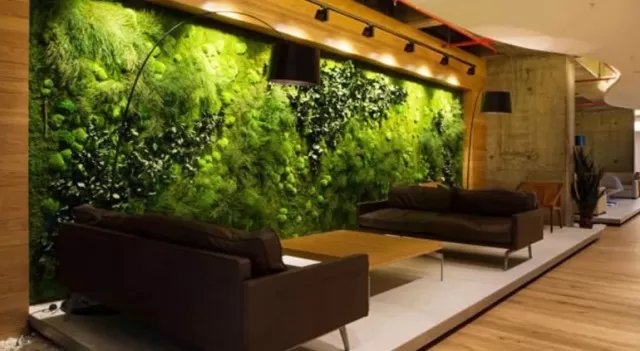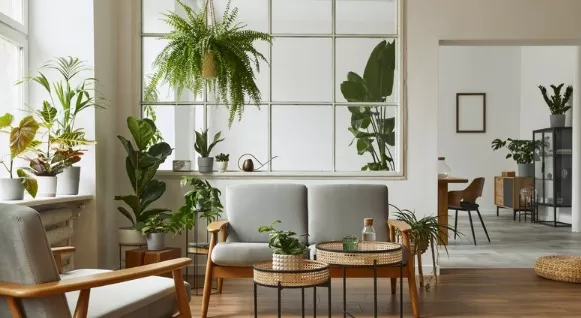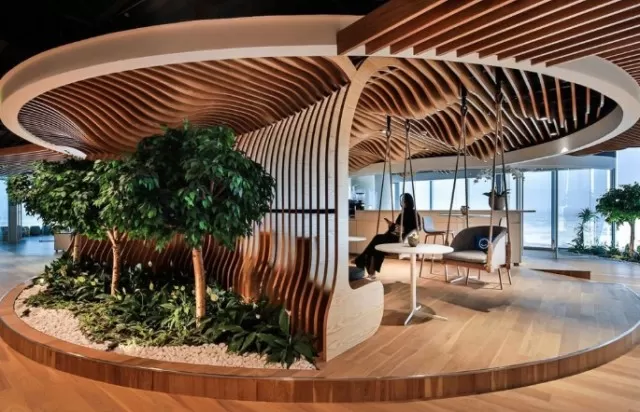Bringing Biophilic Design Home: Expert Tips. In our fast-paced lives, it’s true that we often find ourselves spending an excessive amount of time indoors.
However, by incorporating plants and other natural elements into your home’s decor, you can create a serene and low-stress atmosphere that reconnects you with the beauty of the outdoors.By integrating plants, natural light, organic materials, soothing sounds, nature-inspired colors, and textural elements into your home decor, you can transform your living space into a haven of tranquility. Creating an environment that embraces nature will not only enhance your well-being but also provide a calming retreat from the demands of everyday life, helping you to find solace and serenity within the walls of your own home.
Exploring the Concept and Advantages of Biophilic Design: Bringing Nature Indoors

In today’s world, where the majority of our time is spent indoors, there is an inherent longing for a connection with the natural world.
This desire has led to the rise of biophilic design, a concept that recognizes the importance of integrating nature into our indoor spaces. Biophilic design encompasses a variety of elements, with plants being a prime example, as they not only enhance the aesthetic appeal of our homes but also have the ability to cleanse the air we breathe.
The Environmental Protection Agency (EPA) reveals that an average individual spends approximately 90 percent of their time indoors, whether it be at home or in a work environment.
With such a significant portion of our lives confined within walls, there is an undeniable need for a sense of equilibrium, prompting us to seek ways to infuse natural elements into our indoor surroundings. This is where biophilic design comes into play, employing a thoughtful arrangement of decor, choice of materials, and architectural principles to bridge the gap between humans and the natural environment.
Sustainable designer Zelda Elisco from Abigail-Elise Design Studio asserts that biophilic elements offer a multitude of benefits, profoundly impacting our lives in various ways.
First and foremost, they serve as a powerful reminder of our inherent connection with nature, helping us to re-establish that lost bond. Furthermore, these elements evoke a sense of balance and sanctuary within our spaces, creating a harmonious atmosphere that nurtures both our physical and mental well-being.
In work environments, the incorporation of biophilic design has been shown to enhance productivity, fostering a more conducive and inspiring atmosphere for employees.
By embracing biophilic design, we have the opportunity to transform our indoor environments into sanctuaries that reflect our innate affinity for the natural world.
Whether it’s through the presence of lush greenery, the use of natural materials like wood and stone, or the incorporation of natural lighting and ventilation, each element contributes to a holistic and nurturing space. Biophilic design allows us to escape the confines of our indoor lives, reaping the rewards of a more harmonious and fulfilling existence.
Embracing Natural Light: A Crucial Aspect of Biophilic Design
As you embark on the journey of integrating biophilic design into your home, it is crucial to pay close attention to the role of natural light.
Zelda Elisco, the sustainable designer from Abigail-Elise Design Studio, emphasizes the significance of maximizing natural light and ensuring unobstructed views of the outdoors.
In the realm of biophilic design, the presence of abundant natural light holds immense importance.
It not only illuminates our living spaces but also serves as a powerful connection to the external environment. By harnessing the benefits of natural light, we can create a seamless transition between indoor and outdoor spaces, enhancing our overall well-being.
To optimize the flow of natural light within your home, it is essential to eliminate any objects or barriers that obstruct windows and impede the entry of daylight.
This might involve reevaluating the placement of furniture, removing heavy drapes or blinds, and considering alternative window treatments that allow light to filter through while maintaining privacy.
By allowing ample sunlight to permeate your living spaces, you not only enhance the visual appeal but also promote a healthier and more inviting atmosphere.
Natural light has been proven to have a positive impact on mood, productivity, and overall mental well-being. It brings a sense of openness, vitality, and a connection to the ever-changing patterns of nature.
Incorporating biophilic design principles means inviting the outside world in, and the abundant presence of natural light plays a vital role in achieving this goal.
So, as you embark on your biophilic design journey, remember to prioritize the removal of objects that hinder the flow of light and embrace the transformative power of daylight in creating a harmonious and uplifting living environment.
Embracing Nature From the Ground Up: Choosing Natural Flooring Options

When it comes to implementing biophilic design in your home, one area that often goes unnoticed but can have a profound impact is the choice of flooring materials.
Instead of resorting to carpet, synthetic materials, or plastics, consider the beauty and benefits of natural flooring options such as wood, bamboo, or cork.
By opting for natural flooring materials, you invite a tactile connection with the natural world into your living space.
Unlike the artificial and isolating sensation of walking on carpet or synthetic surfaces, natural flooring allows you to feel the texture and warmth of the earth beneath your feet. This simple act brings us closer to nature, reminding us of our innate connection to the outdoors.
Wood, bamboo, and cork are all excellent choices for biophilic design enthusiasts seeking sustainable and environmentally friendly flooring options.
Wood flooring, with its timeless appeal, adds a touch of warmth and elegance to any room. Bamboo, known for its rapid growth and renewable properties, offers a durable and visually appealing alternative.
Cork, harvested from the bark of cork oak trees, provides a soft and cushioned surface that is both comfortable and environmentally responsible.
In addition to their aesthetic appeal, natural flooring materials offer numerous advantages.
They are easier to clean and maintain compared to carpets, which tend to trap dust, allergens, and odors. Natural flooring also has a longer lifespan, reducing the need for frequent replacements and contributing to a more sustainable home.
Furthermore, the presence of natural flooring in your home supports a healthier indoor environment.
Unlike synthetic materials that may emit volatile organic compounds (VOCs), natural flooring options are low in VOCs, improving indoor Air Quality and promoting overall well-being.
By consciously selecting natural flooring options, you not only infuse your space with the authentic beauty of nature but also prioritize sustainability, health, and a deeper connection to the natural world.
So, when designing your biophilic home, let your feet be guided by the gentle touch of wood, bamboo, or cork, as you create a harmonious and grounding environment that resonates with the essence of nature.
Elevate Nature\’s Beauty: Harnessing Gravity with Suspended Plants
In the realm of biophilic design, the arrangement of plants within your living space plays a pivotal role in creating a harmonious and visually captivating environment.
One creative way to embrace nature’s allure is by harnessing the element of gravity and suspending plants and vines from your ceiling. This design technique not only adds an aesthetic appeal but also evokes a sense of growth, transformation, and the passage of time—key attributes of biophilic design.
By elevating plants and allowing them to gracefully hang from above, you create a captivating display that draws the eye upward and fills the vertical space of your room.
This design approach brings a dynamic element to your living environment, as the plants grow and change over time, creating a living tapestry that embodies the essence of nature.
Suspended plants not only serve as striking focal points but also introduce an organic and sculptural quality to your interior.
The play of light and shadow on the cascading foliage creates a sense of depth and movement, enhancing the overall visual appeal and adding a touch of enchantment to your space.
Incorporating suspended plants also helps to maximize the available floor space, making it an ideal choice for smaller Living Areas.
By utilizing vertical space, you can create a lush and verdant atmosphere without sacrificing valuable floor real estate.
Moreover, hanging plants from the ceiling provides a unique vantage point, allowing you to appreciate the intricate details and natural beauty of each plant from different angles.
It encourages a closer connection with nature as you admire the delicate leaves, vibrant flowers, or trailing vines gently swaying above you.
So, as you embrace the concept of biophilic design, remember to experiment with the element of gravity by suspending plants and vines from your ceiling.
Let them serve as living testaments to the wonder of growth and change, creating a captivating and ever-evolving natural haven within your home.
Breathing Life into Neglected Spaces: Utilizing Large Plants as Corner Fillers

When it comes to incorporating biophilic design principles into your home, it’s important to make the most of every available space.
One effective way to achieve this is by utilizing larger plants in floor pots to revitalize those often overlooked and barren corners. Zelda Elisco, the sustainable designer from Abigail-Elise Design Studio, recommends this approach to infuse vitality into dead spaces and maximize the biophilic impact within your home.
By strategically placing larger plants in floor pots, you can transform neglected corners into vibrant and inviting areas.
These sizable plants not only add visual interest and texture but also create a focal point that draws the eye and breathes life into previously uninspiring spaces. With their lush foliage and graceful presence, they have the power to transform an empty corner into a captivating oasis.
To enhance the biophilic experience, consider selecting natural and earthy containers, such as rattan plant pots.
These containers not only complement the organic beauty of the plants but also add a touch of warmth and authenticity to the overall aesthetic. The combination of a large, thriving plant in a natural container creates a harmonious blend of nature and design, strengthening the connection between your indoor space and the natural world.
In addition to their aesthetic appeal, larger plants offer practical benefits.
They help to improve air quality by naturally filtering and purifying the surrounding environment. Moreover, they contribute to a sense of tranquility and well-being, as their presence has been shown to reduce stress, enhance mood, and increase productivity.
When selecting plants for corner fillers, consider those that thrive in low-light conditions, as corners are often shaded.
Varieties such as snake plants (Sansevieria), pothos (Epipremnum aureum), or zz plants (Zamioculcas zamiifolia) are excellent choices, as they are known for their adaptability and resilience.
So, embrace the concept of biophilic design by filling up dead spaces in corners with larger plants in floor pots.
Let their majestic presence enliven forgotten areas and create a harmonious blend of nature and design. By incorporating these elements, you can transform your home into a sanctuary that nurtures both your aesthetic sensibilities and your well-being.
*The information is for reference only.